Industry study reveals positive impact of public art, placemaking
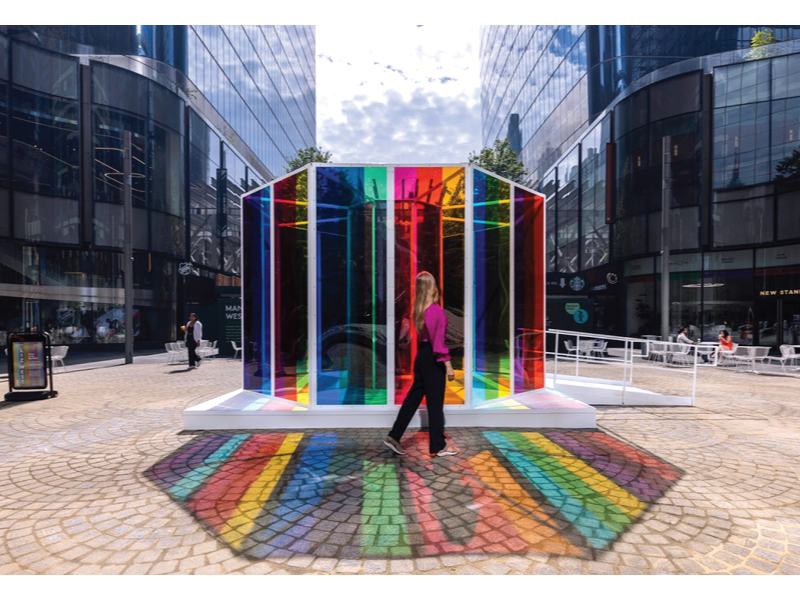
November 16, 2022 (Toronto, ON) – The Creative School (opens in new window) at Toronto Metropolitan University, in collaboration with The Daniels Corporation (external link, opens in new window) , Entro (external link, opens in new window) , Lemay (external link, opens in new window) and MASSIVart (external link, opens in new window) , today released highlights from A New Bottom Line: The Value & Impact of Placemaking. The interdisciplinary study, conducted by academic researchers and industry leaders, examined the effects of art installations, cultural programming, interior design, wayfinding, place branding and architecture in public and private spaces.
“This research opens up new possibilities for evidence-based design of cities, buildings and spaces,” said Dr. Louis-Etienne Dubois, Associate Professor at the School of Creative Industries, an interdisciplinary undergraduate degree program focused on creative enterprise leadership and management at The Creative School, Toronto Metropolitan University. “The study provides a strong empirical foundation to inform design and decision-making, and helps us understand the immediate and enduring benefits of implementing placemaking for retail, real estate, transit and public spaces.”
The study revealed that people are 50 per cent more likely to spend time in spaces with creative placemaking. It also found that locations with placemaking interventions caused increase in personal connection to the built environments, along with a sense of safety, relaxation and emotional stimulation. Placemaking interventions also increased a person’s likelihood of sharing information about the space with others.
“Placemaking is an effective way to elevate any space and strengthen the physical and emotional connection between the people and the places they share,” said Coralie Olson, Managing Partner, MASSIVart. “Our hope is that this study emphasizes the value of placemaking and leads to more impactful placemaking initiatives in Canada, which in turn supports the artistic community and makes art more accessible to the public.” – as well as provides key insights into the relationship between humans and creative environments.
“At Daniels, we have long believed that placemaking is key to effective city building. Throughout our history, we’ve collaborated with a diverse range of stakeholders to identify and invest in opportunities that create a strong sense of place within the communities in which we build,” said Heela Omarkhail, VP, Social Impact. The Daniels Corporation. “The research validates our philosophy that placemaking creates value as it increases positive feelings and connection to places to make sure people love where they live, work, play and learn.”
“Design is a powerful way to connect people to a place. This study shows that placemaking provides identity and meaning, allowing us to form emotional connections that inspire us to engage with a space,” said Vedran Dzebic, Head of Research and Development, Entro.
“Space only becomes place once we find meaning in it, and that meaning is rooted in its quality of life for communities. Collaborative studies like these are foundational for demonstrating our enduring belief in placemaking and its capacity to reflect and celebrate who and where we are, and what we aspire to be,” said Rob Fiorino, Lemay’s Chief Marketing Officer.
Key findings about the impact of placemaking initiatives include:
- 50% increase in the intention to spend time in the built environment
- 53% increase in positive perceptions of the location, resulting in environments that were seen as culturally vibrant, safe, friendly, and supporting an improved quality of life
- 63% increase in positive feelings towards the locations, resulting in environments that were more inviting, beautiful, stimulating and comfortable
- 77% increased likelihood for individuals to recommend the site to friends, family and acquaintances
- 74% increased likelihood for individuals to share information about the location, which can translate to organic conversations that could create increased foot traffic and exposure through word-of-mouth or social media sharing

Lemay’s Escape 67 historic site renewal located in Montreal, Quebec. Photo credit: Marc Cramer
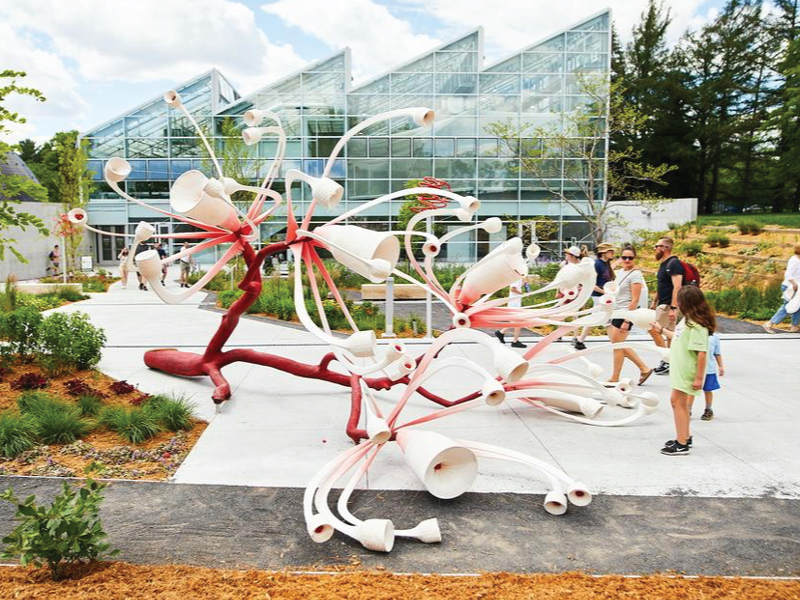
Pop-up art installation for Montreal’s Insectarium and its new Pollinator Garden; curated and produced by MASSIVart in collaboration with Alexis Johnston Benamou and Castor & Pollux, Montreal
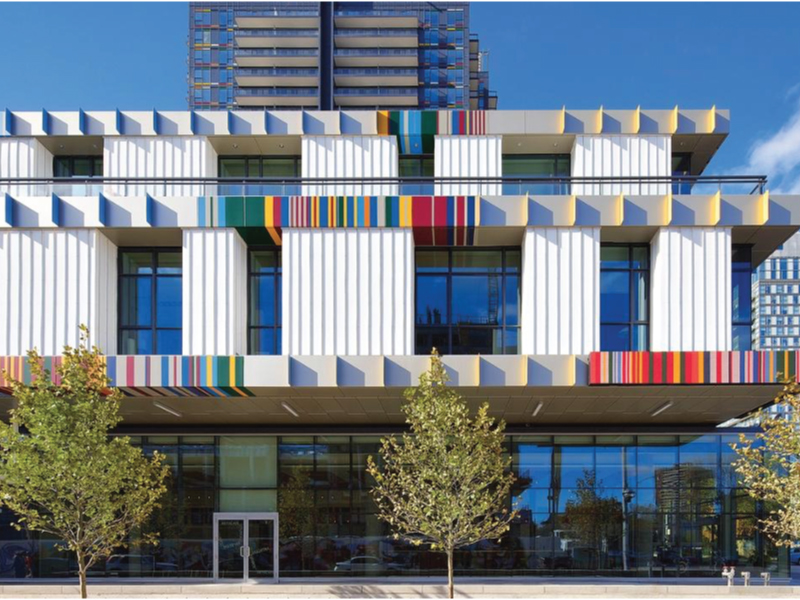
Daniels Spectrum by The Daniels Corporation, Entro, Toronto Community Housing Corporation, Artscape and Diamond Schmitt Architects in collaboration with the Regent Park community, Toronto, Ontario. Photo credit: Lisa Logan
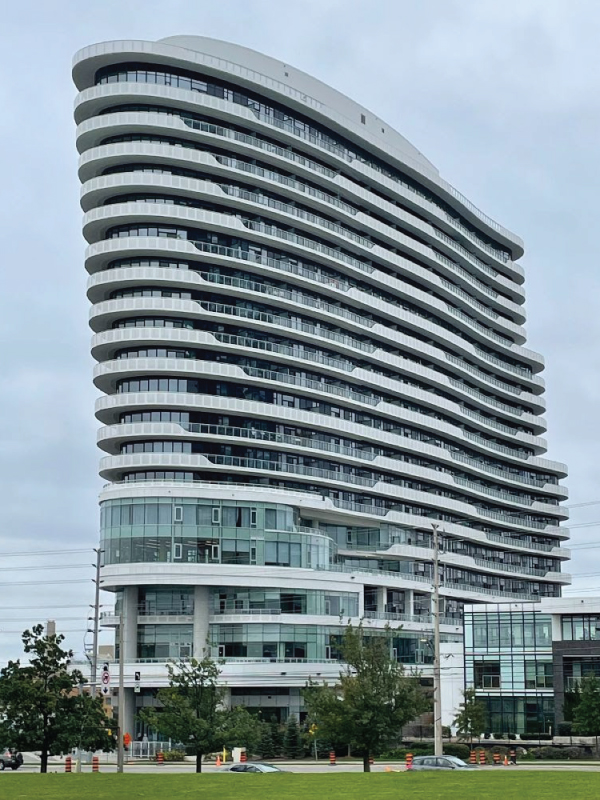
Undulating façade of Arc Condominiums at Daniels Erin Mills designed by Kirkor Architects and Planners for The Daniels Corporation, Mississauga, Ontario. Photo credit; The Daniels Corporation
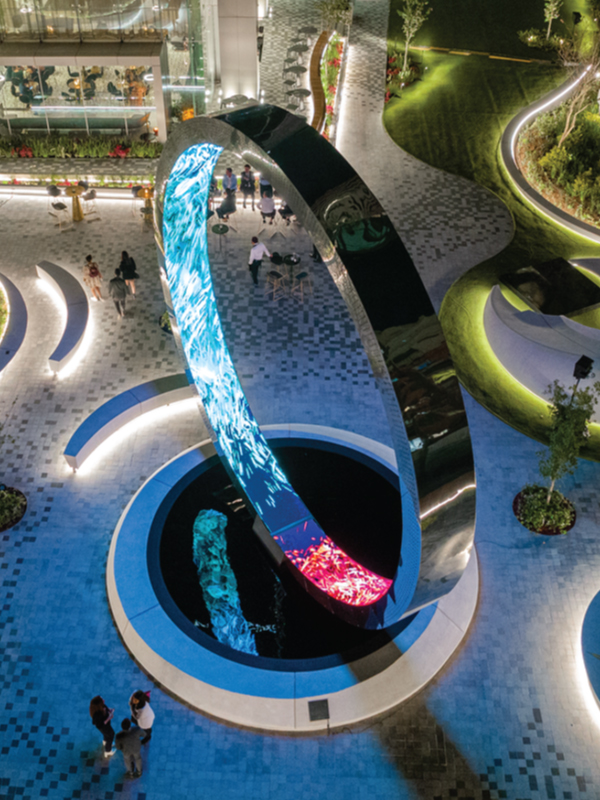
The Eye of Mexico; curated and produced by MASSIVart and artist Ouchhh for Ivanhoé Cambridge, MIRA and Hines, Mexico City
A New Bottom Line: The Value & Impact of Placemaking Report measured responses from 586 participants to quantify the value of placemaking. A total of five environment types were examined, including office, subway platform, public space, retail space and residential/condo lobby.
For further information or to set up interviews, please contact:
Michelle Easton, Easton Creative Communications
416-454-9060 I michelle@eastoncc.ca

About The Creative School at Toronto Metropolitan University
The Creative School (opens in new window) is a dynamic faculty making a difference in new, unexplored ways. Made up of Canada’s top professional schools and transdisciplinary hubs in media, communication, design and cultural industries, The Creative School offers students an unparalleled global experience in the heart of downtown Toronto.
About MASSIVart
MASSIVart (external link, opens in new window) is a global creative and placemaking consulting agency that creates inspiring destinations. We are cultural placemakers, creatives, curators and strategists for the public and private realm. Whether through our strategic creative visions or brand development services, we see culture and placemaking as the cornerstone that enables the creation of sustainable, resilient, inclusive, vibrant, and healthy communities while increasing business opportunities, stimulating local economies and developing strong economic partnerships. From high level master planning to curation, to fabrication and installation, we believe that art and culture have the ability to shape and create the identity of connected and interrelated communities.
About Entro
With a legacy dating back 50 years and a team of over 80 in offices in Toronto, Calgary, Vancouver, New York, Sydney and Zürich, Entro is a world leader in the field of branding and environmental design. Entro uses design to connect people to place. Our practice is built on an avant-garde design philosophy grounded by the science of human interactions and the belief that everyday experiences should be inspirational. We call on design to fuel a dialogue between users and the spaces they inhabit – from hospitals and transit hubs to museums, arts facilities, corporate and educational campuses, and throughout cities.
About The Daniels Corporation
The Daniels Corporation (external link, opens in new window) is one of Canada’s pre-eminent builders/developers, building more than 35,000 new homes across the Greater Toronto Area for over 38 years. Daniels is the developer of TIFF Bell Lightbox in Toronto’s Entertainment District and the City of the Arts community on Toronto’s East Waterfront. Among its many initiatives, Daniels partnered with Toronto Community Housing to revitalize 53 of the 69-acre Regent Park community in Toronto. At the core of the revitalization is both a physical and social re-connection of this once stigmatized neighbourhood to the broader City of Toronto. Today, Regent Park is the global hub of Sustainable Development Goals and home to the World Urban Pavilion – Powered by Daniels, a collaborative initiative between the Urban Economy Forum, UN-Habitat, Canada Mortgage and Housing Corporation and The Daniels Corporation. Understanding that quality of life is created by much more than physical buildings, Daniels goes above and beyond to integrate building excellence with opportunities for social, cultural, and economic well-being.
About Lemay
Lemay has been imagining new ways to create spaces that engage users and bring people together since 1957. Over 450 architects, designers, industry leaders and change-makers work tirelessly to cultivate innovation in their own backyards and in communities around the world. Inspired and strengthened by transdisciplinary creativity, the firm has also developed its very own Net PositiveTM approach to guide teams towards sustainable solutions that shape a better future. With the human experience at its heart, Lemay strives to design with empathy and create spaces to grow.